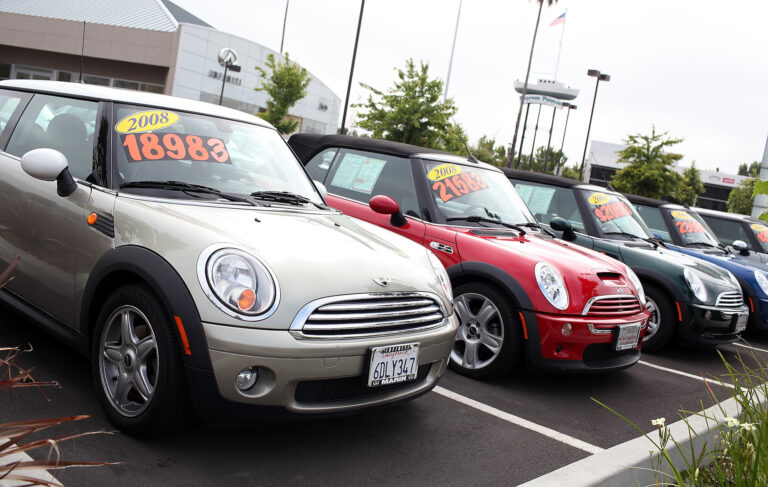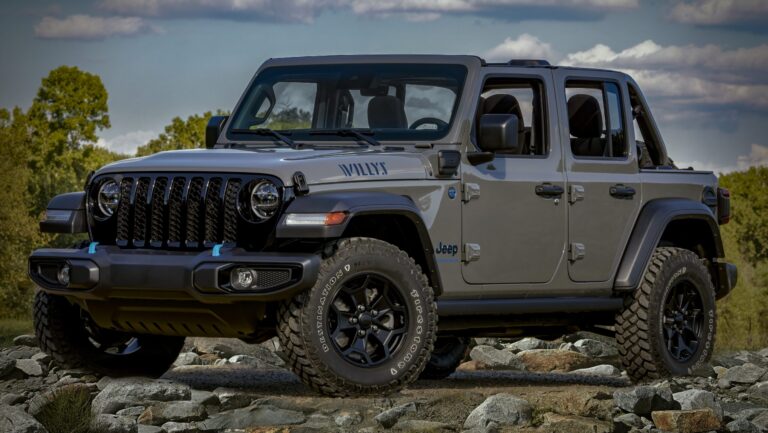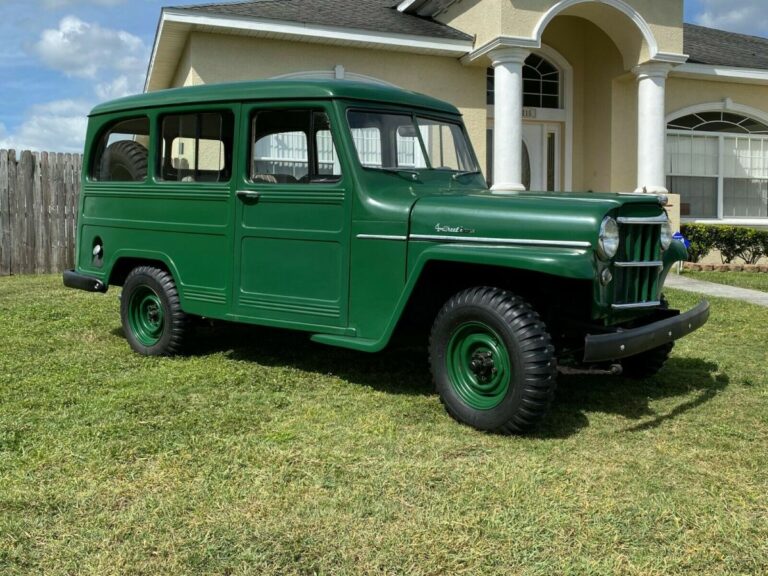1998 Jeep Sahara For Sale: Your Ultimate Guide to an Off-Road Icon
1998 Jeep Sahara For Sale: Your Ultimate Guide to an Off-Road Icon /jeeps.truckstrend.com
The allure of a classic Jeep is undeniable, and among the pantheon of beloved models, the 1998 Jeep Sahara stands out as a true icon. Part of the legendary TJ generation (1997-2006), the ’98 Sahara combines the rugged, go-anywhere spirit of a Wrangler with a touch of enhanced comfort and distinctive styling. For enthusiasts and adventurers alike, finding a 1998 Jeep Sahara for sale isn’t just about acquiring a vehicle; it’s about investing in a piece of automotive history, a gateway to open-air freedom, and a ticket to off-road escapades.
This comprehensive guide aims to arm you with everything you need to know, whether you’re a prospective buyer searching for your dream TJ or a current owner preparing to list your cherished Sahara. We’ll delve into what makes this specific model so special, what to scrutinize when buying, how to price it effectively, and what the ownership experience truly entails.
1998 Jeep Sahara For Sale: Your Ultimate Guide to an Off-Road Icon
The Enduring Appeal of the 1998 Jeep Sahara (TJ Generation)
The TJ-generation Jeep Wrangler, produced from 1997 to 2006, marked a significant evolution from its leaf-sprung YJ predecessor. The most notable change was the adoption of a coil-spring suspension system on all four corners, drastically improving ride comfort and handling on pavement without compromising its legendary off-road prowess. This made the TJ a more versatile vehicle, equally capable of tackling challenging trails and navigating daily commutes (albeit with classic Jeep quirks).
Within the TJ lineup, the Sahara trim represented the more premium offering. It took the rugged foundation of the Wrangler and added distinctive aesthetic and comfort enhancements. For 1998, the Sahara package typically included body-color fender flares (as opposed to black), unique "Sahara" badging, upgraded fabric seats with unique patterns, fog lights, and 15-inch Canyon aluminum wheels. These subtle touches gave the Sahara a slightly more refined, yet still unmistakably adventurous, appearance.
At its heart, the 1998 Jeep Sahara was powered by the venerable 4.0-liter AMC straight-six engine (inline-6), renowned for its bulletproof reliability, ample low-end torque, and ease of maintenance. This engine, paired with either a 5-speed manual or a 3-speed automatic transmission, and Jeep’s robust Command-Trac NP231 part-time 4WD transfer case, ensured that the Sahara lived up to the Wrangler name’s reputation for conquering virtually any terrain. Its combination of classic styling, improved comfort, and legendary capability has cemented the 1998 Sahara’s status as a highly sought-after collectible in the used car market.
Key Features and Specifications of the 1998 Sahara
Understanding the specific attributes of the 1998 Jeep Sahara is crucial for both buyers and sellers.
- Engine: 4.0L AMC Inline-6 (I6) engine.
- Horsepower: Approximately 181 hp @ 4600 rpm
- Torque: Approximately 222 lb-ft @ 2800 rpm
- Fuel System: Multi-point electronic fuel injection
- Transmission Options:
- Manual: Aisin AX-15 5-speed manual (highly durable and popular)
- Automatic: Chrysler 32RH 3-speed automatic (robust but lacks an overdrive gear, impacting highway fuel economy)
- Drivetrain:
- Transfer Case: Command-Trac NV231 part-time 4WD with 2HI, 4HI, N, and 4LO settings.
- Axles: Dana 30 front axle, Dana 35c rear axle (some rare Saharas had the optional, stronger Dana 44 rear axle).
- Suspension: Coil-spring suspension on all four wheels for improved ride comfort and articulation.
- Brakes: Front disc, rear drum brakes.
- Sahara-Specific Features:
- Body-color fender flares
- Unique "Sahara" decals and badging
- Upgraded cloth seats with distinctive patterns (often green or tan plaid/stripe patterns)
- Integrated fog lights
- 15-inch Canyon aluminum wheels with 30-inch tires from the factory
- Full center console
- Leather-wrapped steering wheel
- Optional soft top or hardtop configurations
What to Look For When Buying a 1998 Jeep Sahara
Purchasing a 25-year-old vehicle, especially one designed for off-road use, requires meticulous inspection. Here are the critical areas to examine:
-
Rust, Rust, Rust! This is the #1 killer of TJs.
- Frame: Inspect the entire frame, especially near the control arm mounts, skid plates, and just behind the front tires (the "frame rot" area). Look for flaking, holes, or extensive pitting. Pay close attention to the rear sections near the bumper.
- Body: Check rocker panels, floor pans (under the carpet), door sills, and around the windshield frame.
- Underbody: Inspect exhaust, brake lines, and fuel lines for corrosion.
- Severity: Surface rust can be addressed, but structural frame rust is a deal-breaker unless you’re prepared for major fabrication.
-
Mechanical Condition:
- Engine: Listen for unusual noises (knocking, ticking, excessive valvetrain noise). Check for oil leaks (especially rear main seal), coolant leaks, and signs of overheating. Ensure proper oil pressure.
- Transmission: For manuals, check clutch engagement, smooth shifting, and any grinding. For automatics, ensure smooth shifts without slipping or harshness.
- Transfer Case: Test all 4WD modes (2HI, 4HI, 4LO). Listen for grinding or clunking. Check for leaks.
- Axles & Driveshafts: Look for leaks at the differential covers. Check U-joints on driveshafts and axles for play.
- Suspension & Steering: Inspect shocks for leaks, control arm bushings for cracks, and ball joints for play. Check the steering linkage for excessive looseness.
-
Electrical System: Test all lights (headlights, turn signals, brake lights, interior lights), gauges, radio, HVAC controls, and wipers. Power windows/locks (if equipped) should function smoothly.
-
Interior and Exterior Condition:
- Interior: Check for rips, tears, and excessive wear on seats. Ensure all seatbelts function. Look for water stains under the carpet, indicating past leaks.
- Soft Top/Hardtop: Inspect the soft top for rips, clear window clarity, and proper zipper function. If a hardtop, check for cracks and proper sealing.
- Body Panels: Look for dents, dings, and signs of previous accidents or poor bodywork.
-
Modifications: Many TJs are modified. Assess the quality of any aftermarket parts (lift kits, bumpers, winches).
- Lift Kits: Was it installed correctly? Are steering and suspension geometry corrected? Large lifts with stock axles can lead to issues.
- Tires: Are they excessively large? This can strain the drivetrain if not properly re-geared.
-
Documentation: Request service records, title history, and a CarFax or AutoCheck report. This provides invaluable insight into the vehicle’s past.
Pricing Your 1998 Jeep Sahara: A Seller’s Guide
Selling a 1998 Jeep Sahara requires a realistic understanding of its market value. Several factors will significantly influence your asking price:
-
Condition is King:
- Rust-Free: A truly rust-free frame and body will command a premium, especially in areas prone to rust.
- Mechanical Soundness: A well-maintained engine, transmission, and drivetrain with no major issues will significantly increase value.
- Cosmetic Condition: A clean interior, good paint, and an intact top add value.
-
Mileage: Lower mileage generally translates to a higher price, but maintenance history can sometimes outweigh high mileage if the vehicle has been meticulously cared for.
-
Modifications:
- Tasteful & Quality: Well-done, high-quality modifications (e.g., reputable lift kit, upgraded axles, well-installed winch) can add value, particularly to buyers looking for a trail-ready rig.
- Poorly Done/Extreme: Shoddy work or overly aggressive modifications can deter buyers and actually decrease value.
- Originality: A completely stock, unmolested Sahara is rare and highly desirable to collectors, often fetching top dollar.
-
Trim Level & Options: As a Sahara, your Jeep already holds more value than a base Sport or SE. Factory options like the Dana 44 rear axle or air conditioning can also increase appeal.
-
Geographic Location: Jeeps in dry climates (Southwest, West Coast) often have less rust and higher values than those from the Rust Belt or areas with heavy road salt use.
Practical Advice for Sellers:
- Thorough Cleaning: Detail your Jeep inside and out. A clean vehicle makes a much better first impression.
- Address Minor Issues: Fix small, inexpensive problems (e.g., burnt-out bulbs, minor leaks, non-functioning switches). This shows diligence and prevents buyers from using them as major negotiation points.
- High-Quality Photos: Take numerous clear, well-lit photos from all angles, including the interior, engine bay, and undercarriage (highlighting the frame condition).
- Honest Description: Be transparent about any known flaws, issues, or modifications. A detailed and honest description builds trust.
- Market Research: Check online marketplaces (Craigslist, Facebook Marketplace, Bring a Trailer, specialty Jeep forums) for similar 1998 Jeep Saharas currently for sale in your region to gauge realistic pricing.
The Ownership Experience: Pros and Cons
Owning a 1998 Jeep Sahara is a unique experience, offering distinct advantages and some potential challenges.
Pros:
- Unmatched Off-Road Capability: The TJ’s short wheelbase, excellent approach/departure angles, and robust 4WD system make it incredibly capable on trails.
- Open-Air Freedom: The removable doors, fold-down windshield, and soft top/hardtop options offer an unparalleled connection to the outdoors.
- Strong Aftermarket Support: The TJ is one of the most customizable vehicles ever made, with thousands of aftermarket parts available.
- Vibrant Community: A massive and supportive community of Jeep enthusiasts exists, offering advice, camaraderie, and organized events.
- Relatively Simple Mechanics: The 4.0L engine and basic systems are generally straightforward to work on for the DIY mechanic.
- Holds Value Well: Well-maintained TJs, especially Saharas, tend to retain their value, often appreciating if kept in pristine condition.
- Classic Appeal: The iconic round headlights and classic Jeep styling never go out of fashion.
Cons:
- Fuel Economy: The 4.0L engine, combined with the vehicle’s boxy aerodynamics and often larger tires, results in modest fuel economy (typically 15-18 MPG).
- Ride Quality: While improved over the YJ, the ride can still be stiff and bouncy, especially on rough roads or with certain lift kits.
- Road Noise: Due to its design and removable top/doors, the TJ can be noisy at highway speeds.
- Rust Potential: As highlighted, rust is a constant battle, particularly in areas with harsh winters or coastal climates.
- Safety Features: Being a 1998 model, it lacks many modern safety features (e.g., advanced airbags, ABS as standard, stability control).
- Maintenance of an Older Vehicle: Expect to replace wear-and-tear items as they age (bushings, hoses, belts, sensors).
Tips for a Successful Transaction (Buyer & Seller)
- Buyers:
- Pre-Purchase Inspection (PPI): Always get a professional, independent mechanic to inspect the vehicle, especially for rust and mechanical soundness. This small investment can save you thousands.
- Test Drive: Drive the Jeep on various surfaces, including highway speeds, to check for vibrations, steering issues, and transmission performance.
- Negotiate Respectfully: Be firm but fair. Have your research and inspection notes ready to support your offer.
- Secure Payment: Use secure payment methods like a cashier’s check or bank transfer. Avoid cash for large sums.
- Sellers:
- Be Prepared: Have all documentation (title, service records) readily available.
- Be Transparent: Honesty about the vehicle’s condition builds trust and can prevent issues down the road.
- Safety First: When test driving with a potential buyer, ensure you accompany them and take necessary safety precautions.
- Bill of Sale: Always use a detailed bill of sale for both parties, outlining the vehicle’s details, sale price, and "as-is" condition.
1998 Jeep Sahara For Sale: Estimated Price Range Table
The price of a 1998 Jeep Sahara can vary significantly based on condition, mileage, location, and modifications. This table provides a general estimate:
| Condition Category | Description | Estimated Price Range (USD) |
|---|---|---|
| Excellent | Low mileage (<100k miles), virtually no rust, pristine mechanicals, clean interior, original or tasteful, high-quality modifications. Collector potential. | $15,000 – $25,000+ |
| Good | Average mileage (100k-150k miles), minimal surface rust, solid mechanicals with minor wear, clean interior with some signs of age. Well-maintained. | $10,000 – $14,999 |
| Fair | Higher mileage (150k-200k+ miles), moderate rust (not structural), needs some mechanical attention (e.g., minor leaks, worn bushings), cosmetic flaws. | $6,000 – $9,999 |
| Project | High mileage, significant rust (potential structural), major mechanical issues, substantial cosmetic damage. Requires extensive work. | $2,500 – $5,999 |
Note: These are estimated ranges and can fluctuate based on specific market demand, regional differences, and the presence of rare options (e.g., Dana 44 rear axle).
Frequently Asked Questions (FAQ) about the 1998 Jeep Sahara
Q1: Is the 1998 Jeep Sahara a good daily driver?
A1: It can be, but it depends on your expectations. It’s not as comfortable, quiet, or fuel-efficient as modern SUVs. It excels in short commutes, urban driving, and, of course, off-roading. Long highway trips can be tiresome due to noise and ride quality.
Q2: What’s the typical fuel economy for a 1998 Sahara?
A2: Owners typically report 15-18 miles per gallon (MPG). This can decrease significantly with larger tires, lift kits, and heavy accessories.
Q3: What are the most common problems to look out for on a 1998 TJ Sahara?
A3: Rust (especially frame), oil leaks (rear main seal), cooling system issues (water pump, thermostat, radiator), exhaust manifold cracks, and general wear and tear on suspension components (bushings, ball joints).
Q4: Can I put bigger tires on a stock 1998 Sahara?
A4: From the factory, Saharas came with 30-inch tires. You can often fit 31-inch tires with minimal rubbing, but for 33-inch or larger tires, a lift kit and potentially re-gearing the axles are recommended to maintain performance and prevent drivetrain strain.
Q5: Is rust always an issue with these Jeeps?
A5: Unfortunately, yes, especially in regions that use road salt or have high humidity. It’s the primary concern for any older TJ. However, well-maintained Jeeps from dry climates can be relatively rust-free. Regular washing, especially underneath, can help mitigate rust.
Q6: What’s the main difference between the Sahara and other TJ trims like the Sport or SE?
A6: The Sahara was primarily an appearance and comfort package. It shared the same drivetrain and fundamental capabilities as other TJs but added body-color fender flares, unique fabric seats, fog lights, better wheels, and a more premium interior finish. The Sport and SE trims were more basic in their styling and amenities.
Concluding Summary
The 1998 Jeep Sahara for sale represents a unique opportunity to own a piece of automotive legend. Its blend of classic Wrangler aesthetics, the improved comfort of the TJ’s coil-spring suspension, and the bulletproof reliability of the 4.0L inline-six engine makes it a highly desirable vehicle for both off-road enthusiasts and those seeking a distinctive, adventurous daily driver.
Whether you’re embarking on the journey to purchase one or preparing to pass yours on to a new owner, thorough research, meticulous inspection, and honest communication are paramount. By understanding the specific characteristics of the ’98 Sahara, its potential challenges, and its enduring appeal, you can ensure a successful and rewarding experience. This iconic Jeep isn’t just a mode of transport; it’s a lifestyle, a statement, and a promise of countless open-air adventures to come.






